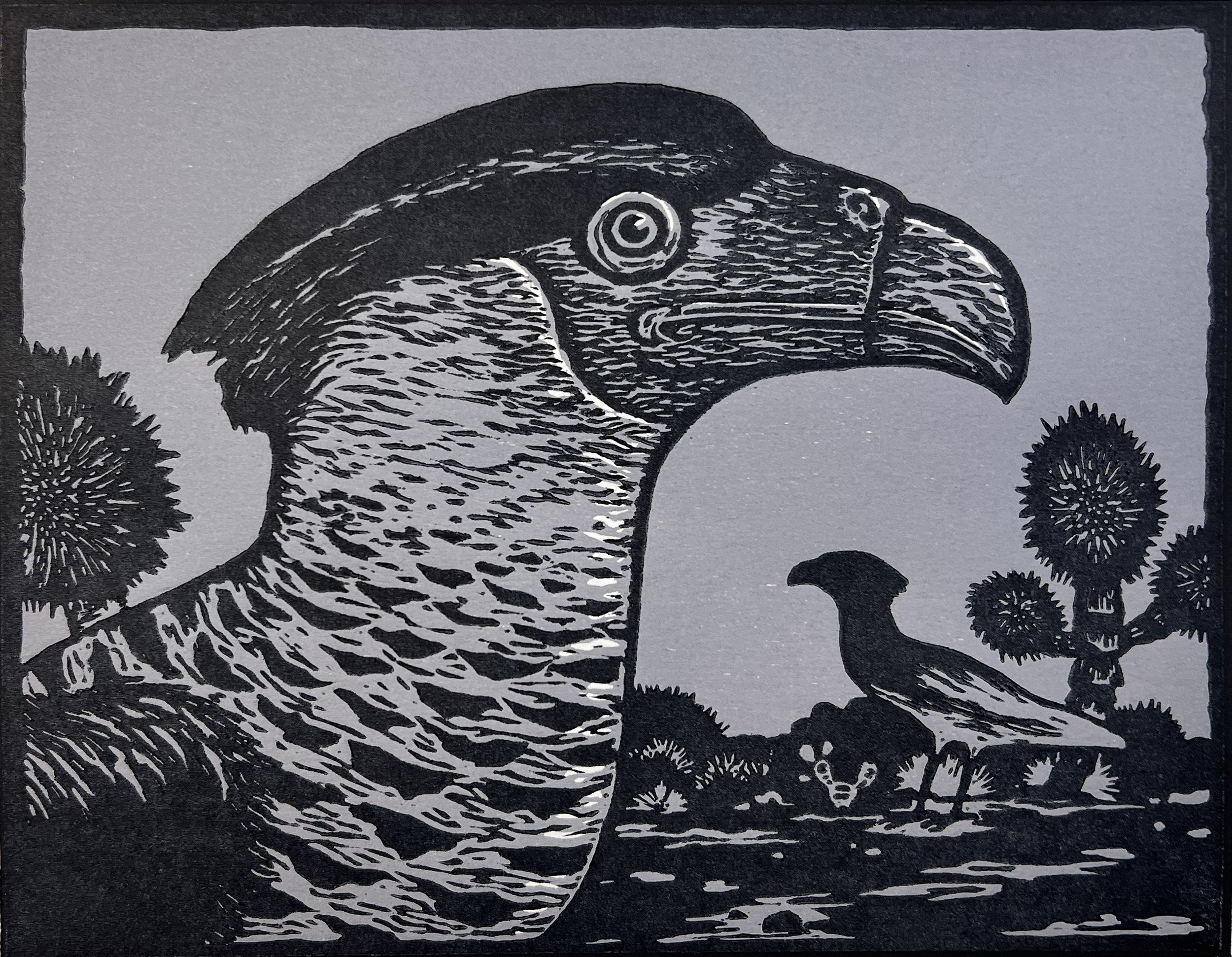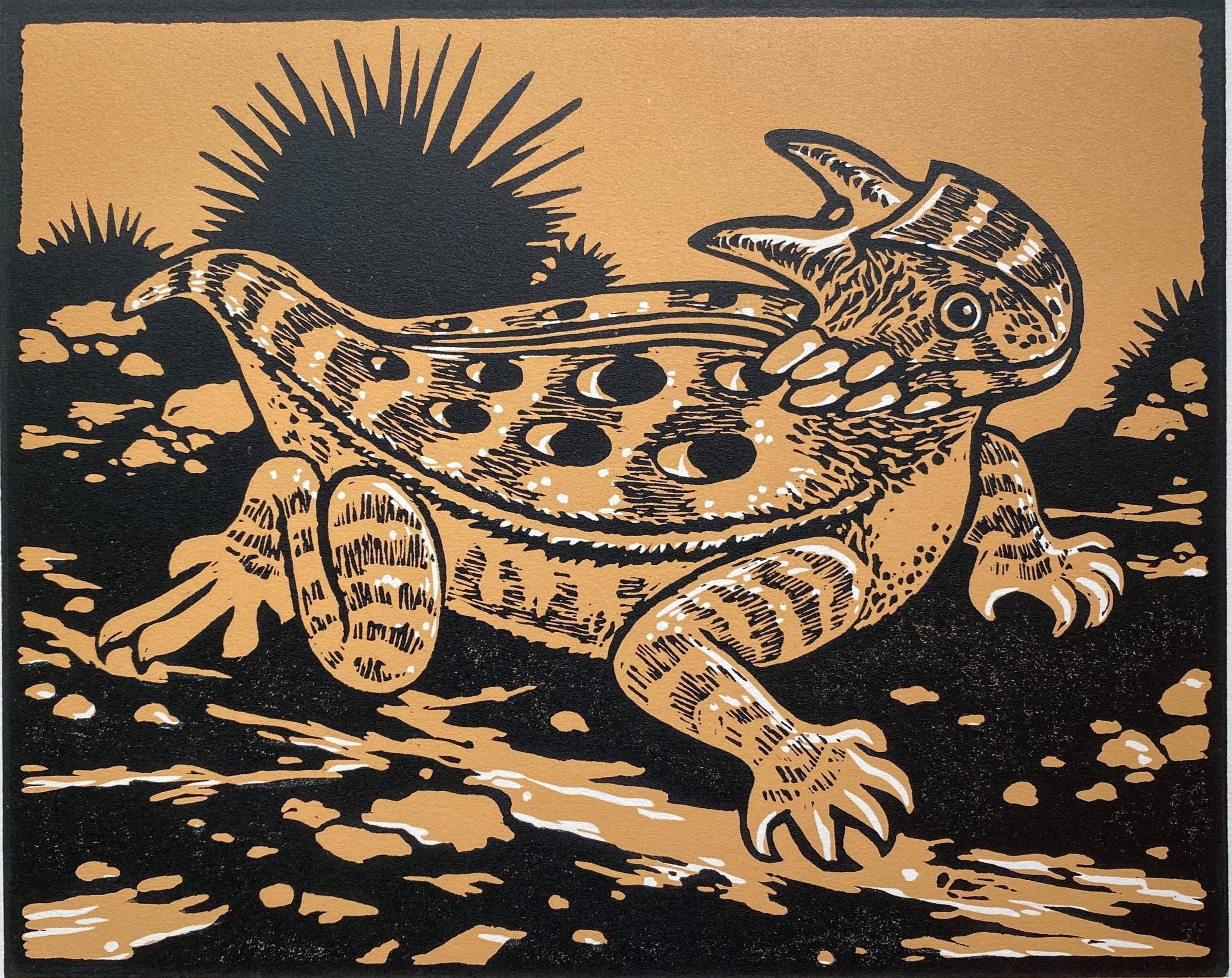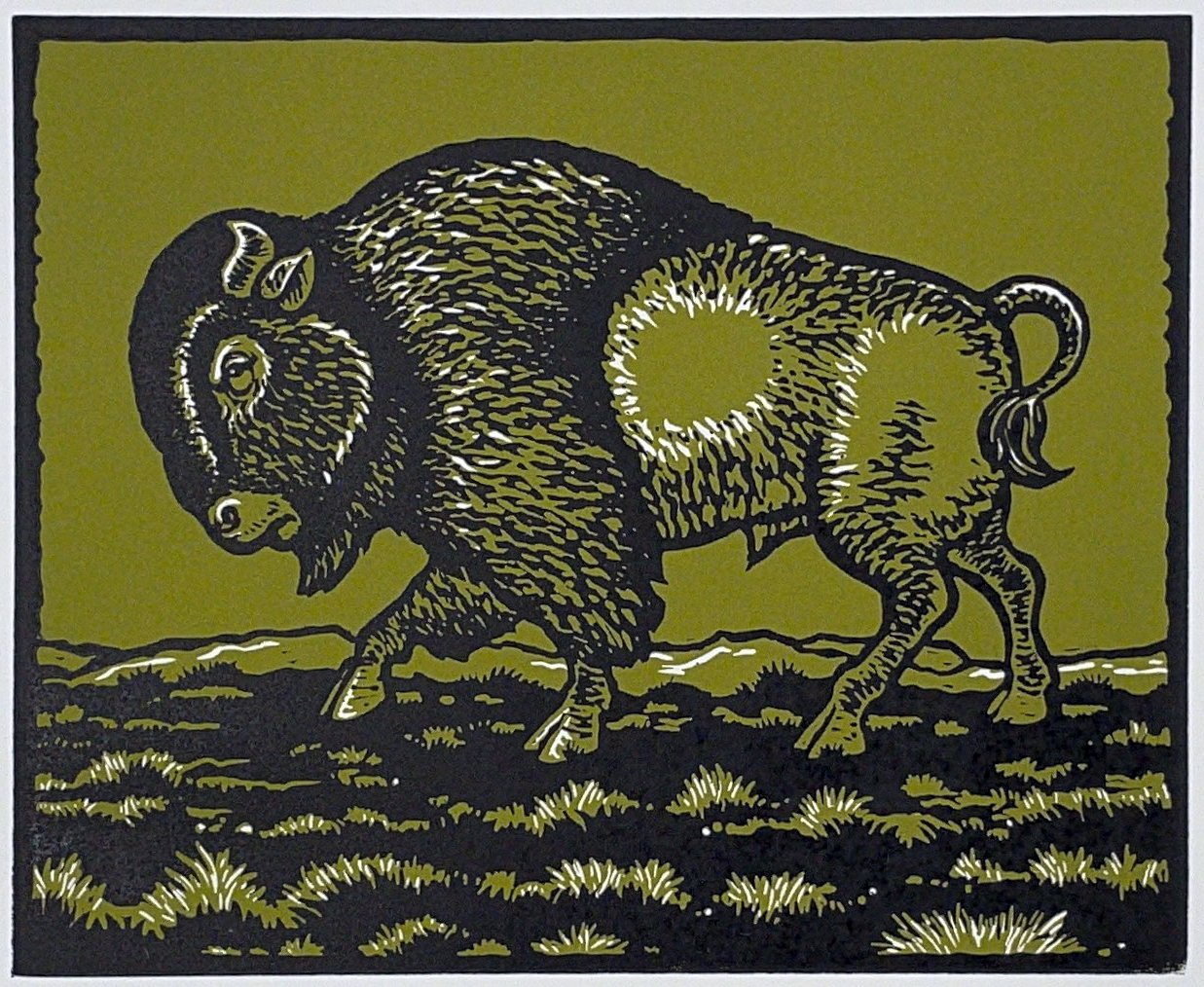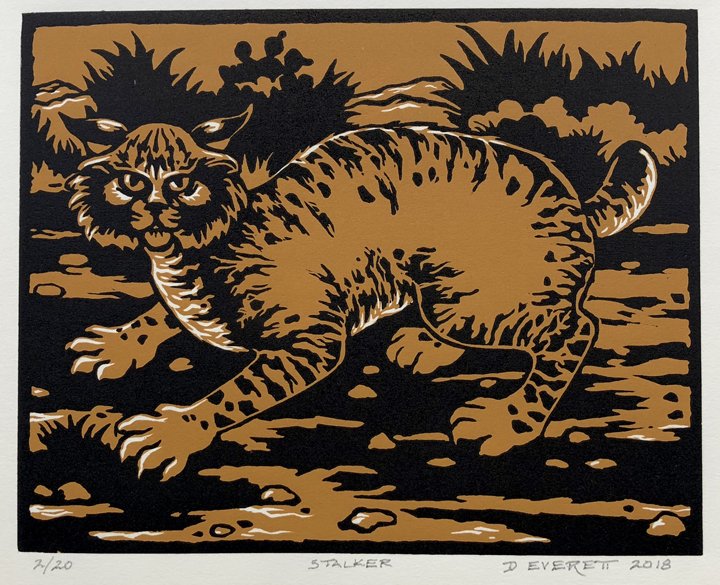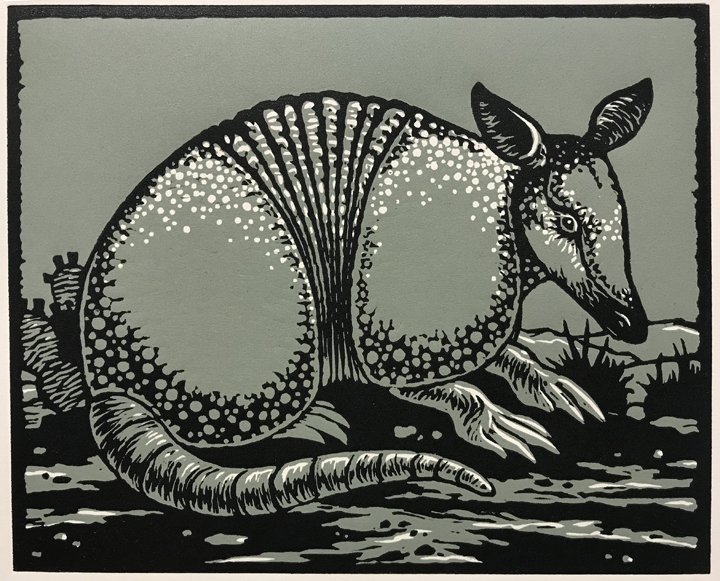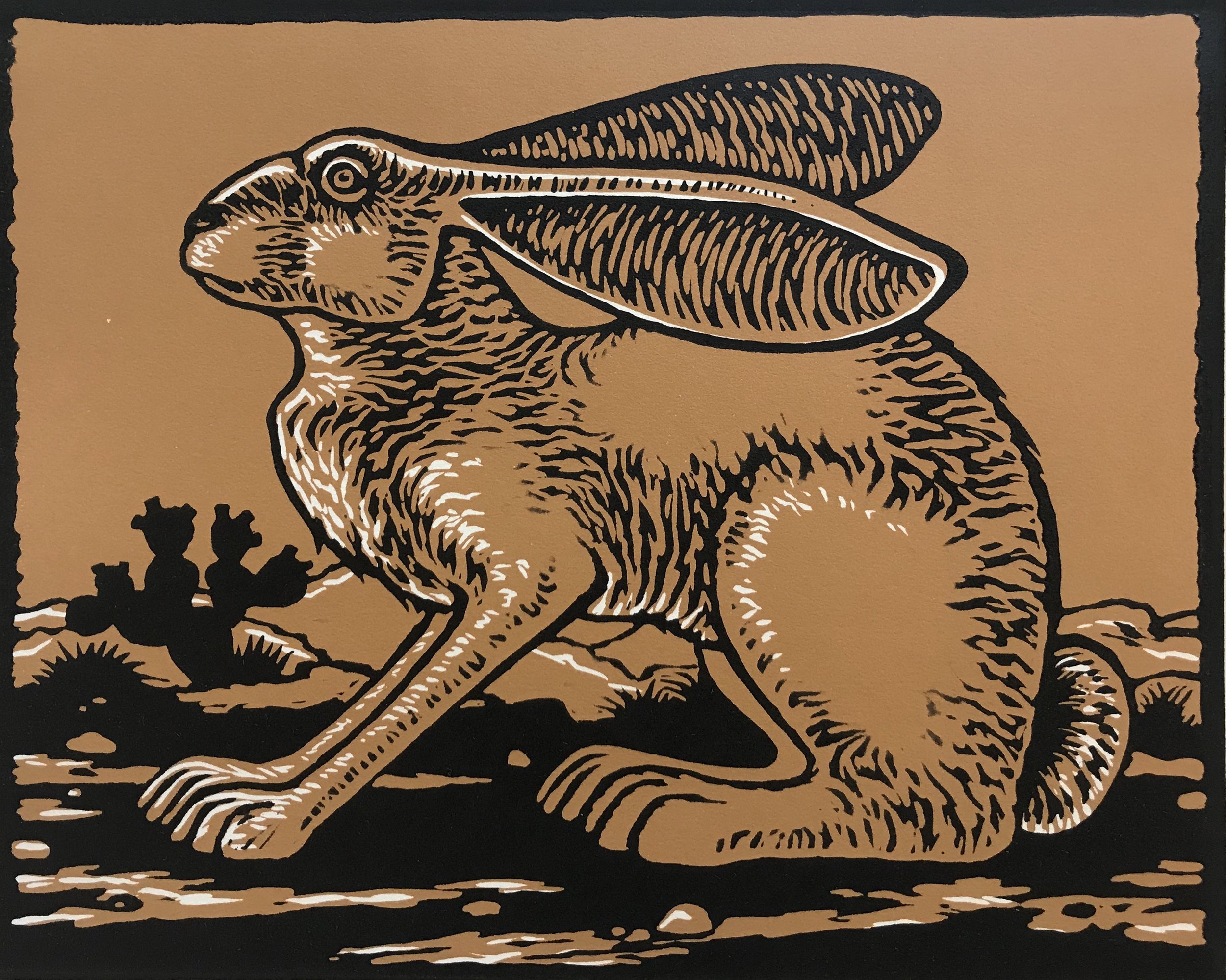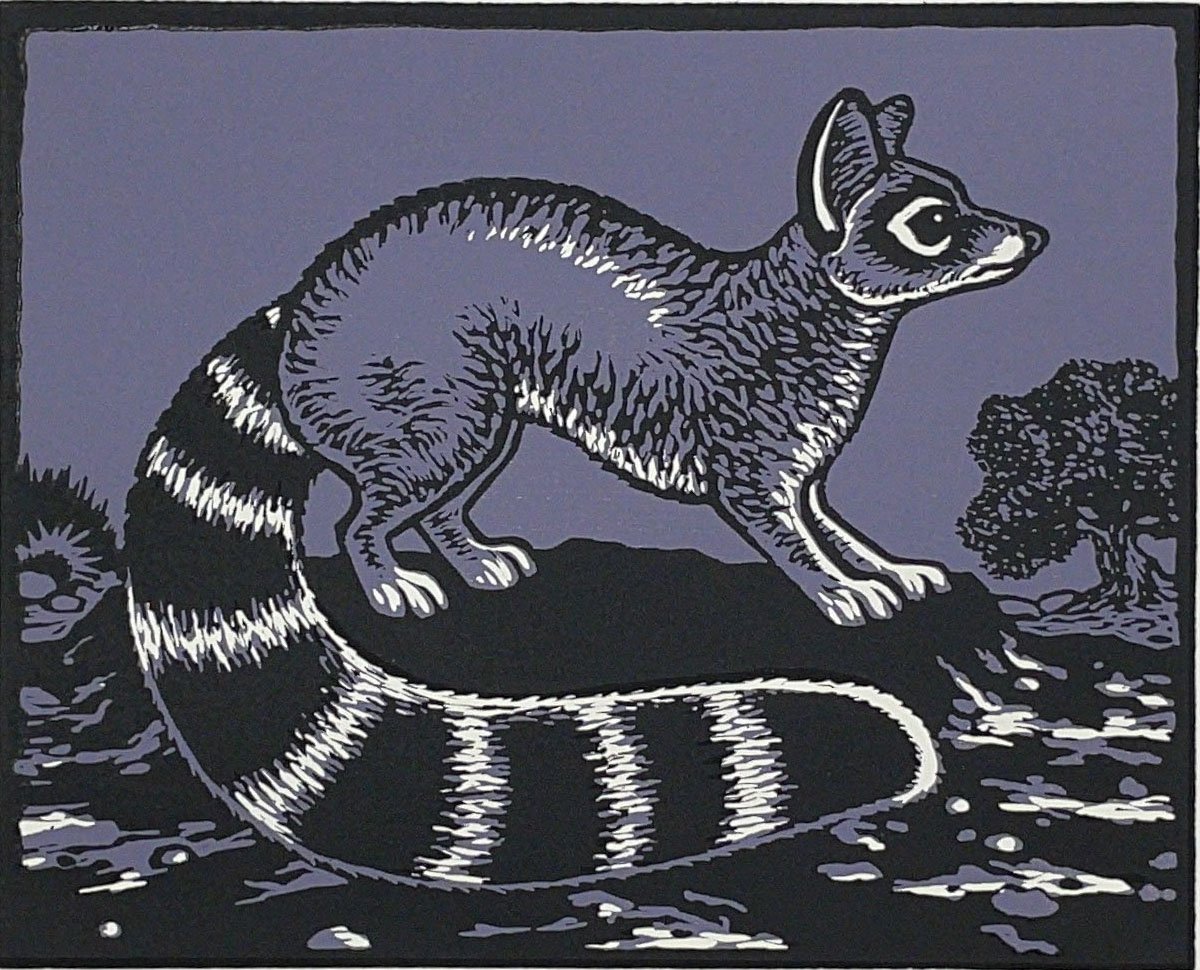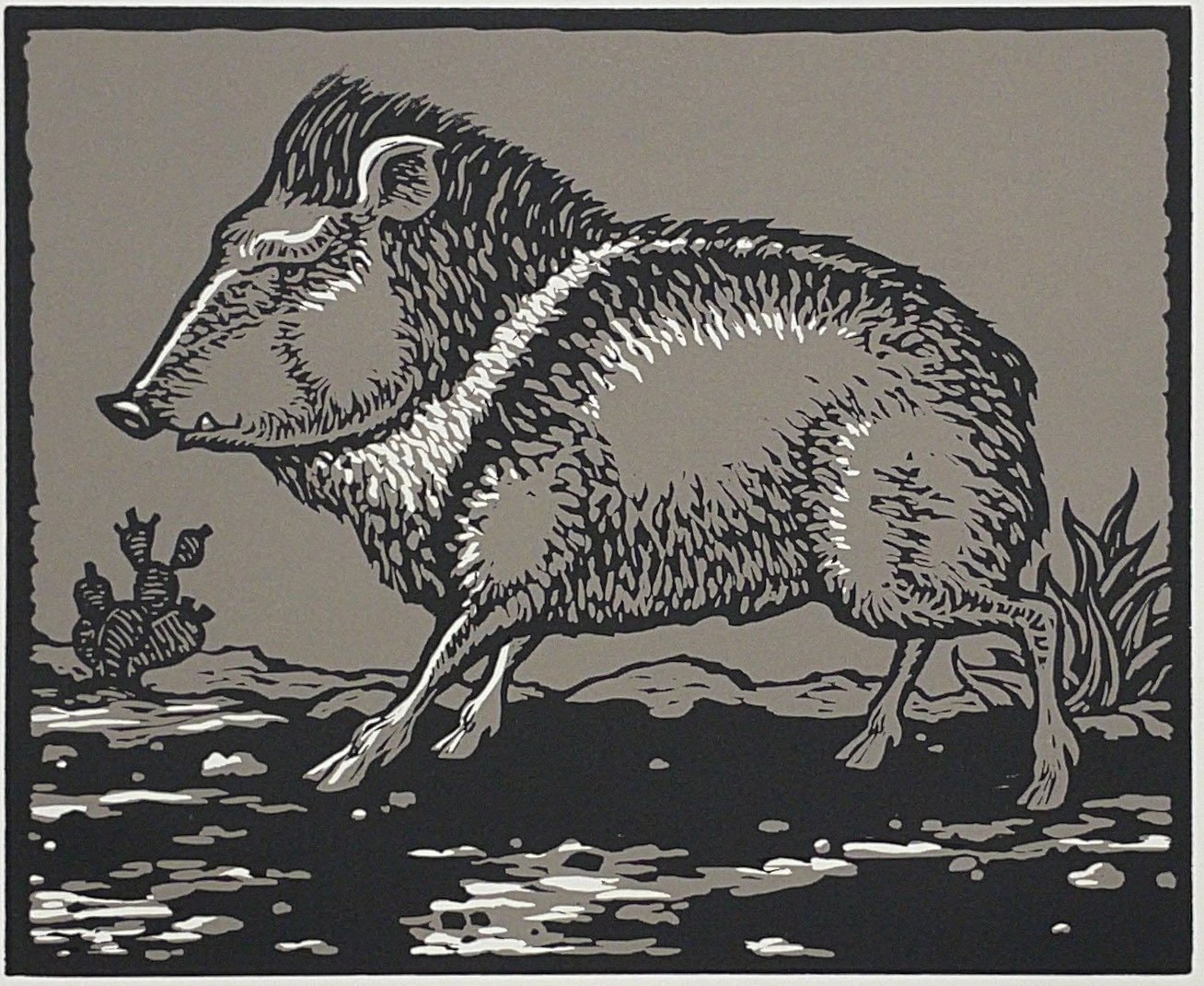David Everett Adds Three New Prints to his Southwest Lexicon of Creatures
Flatbed Press is proud to announce the publication of three new woodcuts by David Everett. The newest to join his lexicon of southwestern creatures are Caracara, Roadrunner, and Kingfisher. These recent choices of Everett’s are all birds found in Texas. Roadrunner and Caracara are often seen in arid areas but the Kingfisher thrives near lakes, rivers, and other aquatic areas.
The Caracara ranges from southern Texas through Mexico and into South America. It may look like a hawk with its sharp beak and talons, and may behave like a vulture, but is technically a large tropical black-and-white falcon. It is also known as the Mexican Eagle or in folklore as the “Bone Crusher.” They can be seen near Austin hovering over range lands or open fields, and are recognized by their wide wing-width and the bright orange exposed skin over their beaks. Everett gives us a distinguished portrait of a Caracara with its partner in the distance walking on the ground in an arid area. Everett printed the background with a translucent lavender gray close to the color of a cloudy dawn.
Everett’s Roadrunner is a playful rendition of the iconic bird well-known to us. Everett captured its portrait with its high bushy-black crest and long striped and dotted patterned neck and breast. His bill is long, heavy, and slightly downcurved. and long curved beak. In the background, Everett carved the silhouette of its companion in an arid setting, displaying the typical Roadrunner’s long, straight tail. The background is printed a warm “toasty” brown echoing the coloring of the Roadrunner and its habitat where it can safely “disappear.”
The Kingfisher is perhaps the bird with which Everett is most familiar. Growing up near the coast of Texas, he saw many kingfisher birds since they can be found near lakes, the coast, and wetlands. He has carved kingfisher birds in polychromed sculpture which have been painted in detail. This woodcut of Kingfisher was printed with blue ink mixed to come close to the bird’s natural color. Everett accurately carved the portrait of the Kingfisher’s heavy head and a hefty bill showing its distinctive profile. Bird enthusiasts will identify this Kingfisher as a female, as it has the typical light-colored bands at the neck and below the breast. Male kingfishers which are the same color as females have only the neck band. In the background, Everett carved the mate perched on a riverside branch patrolling the water.
Everett, well known for his large wood-carved three-dimensional polychrome sculptures of all manner of animals and unique combination of animals (fish, fowl, reptile, and mammal) has turned his chisels to wood plank surfaces to create woodcuts referencing. animals of the southwest. To date, Everett has produced five in the series. Everett used the woodcut technique “chiaroscuro woodcut.” Chiaroscuro woodcuts have two carved blocks. The principal block carries the detail and the main carving of the image. The secondary block adds color and has the image’s highlights cut into it. The secondary block is printed first and the ink is allowed to dry. The primary (key) block is printed last over the color. This historical technique was employed by Durer and other artists creating woodcuts.
All the woodcuts of the series have an image size of 8 x 10 inches and are printed onto 12 3/4 x 14 inch sized Rives BFK lightweight and are in editions of 20.

